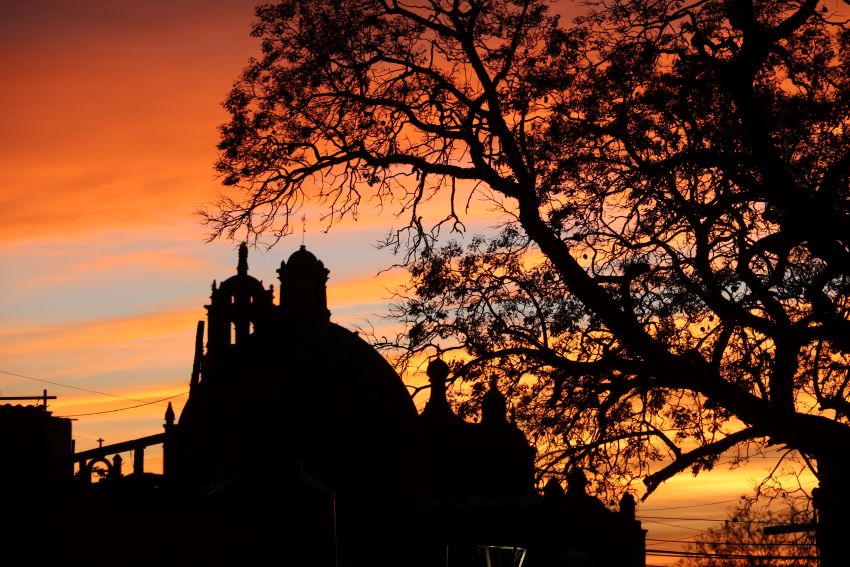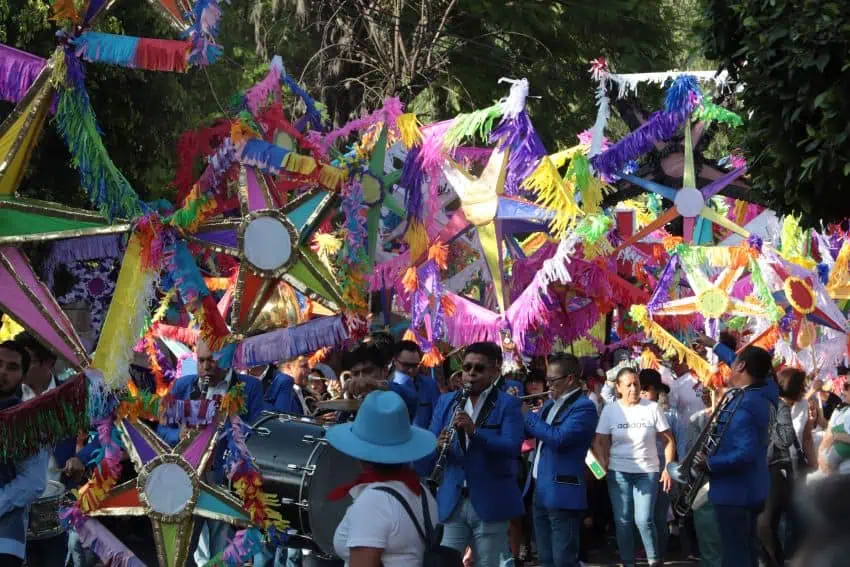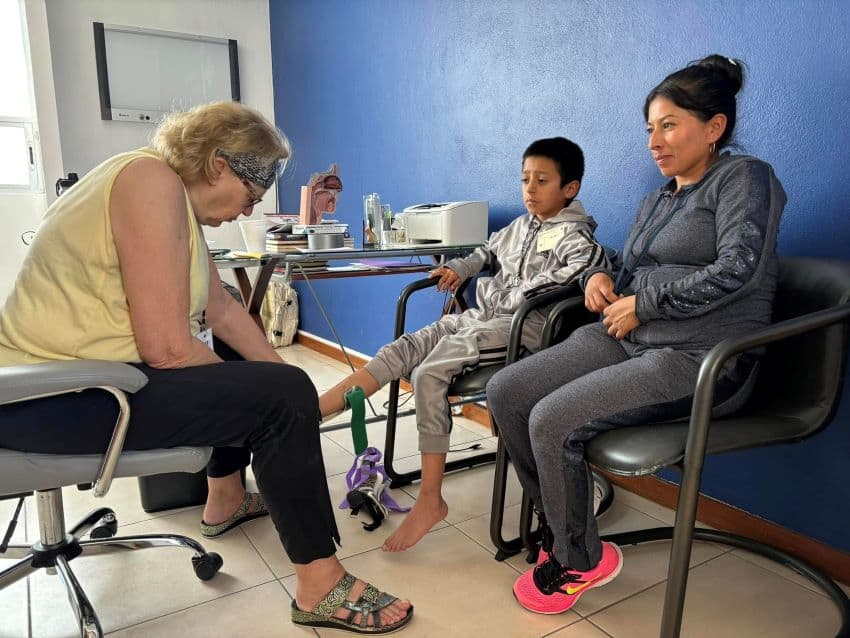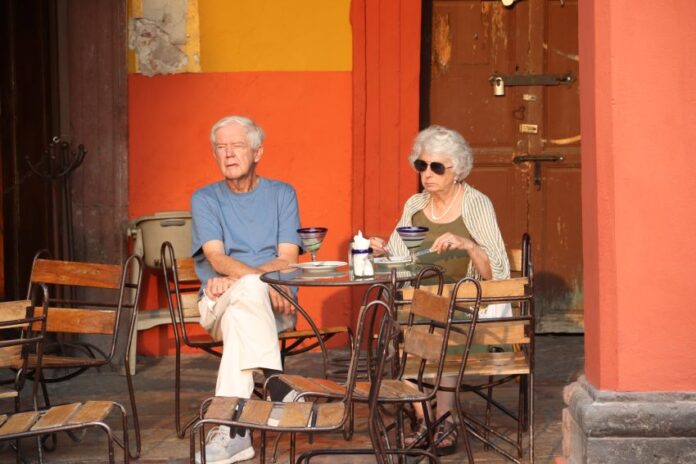After the July 4 anti-gentrification march in Mexico City, gentrification is on everyone’s mind. In Mexico News Daily, Sarah DeVries spoke about this controversial topic as a U.S. citizen. María Meléndez took up the subject as a Mexican born in Mexico City. Now, it’s my turn to speak as a Mexican born and raised in San Miguel de Allende, a city that has perhaps seen more aggressive and rapid gentrification than anywhere else in the country. I have lived here for more than 30 years, my parents are from here, and I went to local public schools in the center of town. I love my city.
I have mixed feelings about the foreign community living in the city. On one hand, I believe that having foreigners live in San Miguel has enriched the community enormously. But I also feel deep sadness at not being able to imagine the house of my dreams in San Miguel because the costs are extremely high. So are food, services and other products that you find cheaper elsewhere. In some ways, living in San Miguel is like living in a golden cage.

Gentrification in San Miguel has pros and cons alike. Let’s delve into them.
The negative
Displacement of traditions
Those of us who live in San Miguel know the tradition of Friday of Sorrows, the Friday before Holy Week, when owners of San Miguel’s houses open their doors to the public, set up an altar dedicated to the Virgin of Sorrows and give visitors flavored water, popsicles and ice cream. But every year, I have watched as fewer and fewer houses set up their altars downtown.
The typical altars I remember from my childhood have gradually disappeared. Why? Because San Miguel natives no longer live downtown. The people who live there now are foreigners who do not participate in these traditions. San Miguel natives, displaced to neighborhoods and areas farther from the center, have taken the city’s classic traditions with them.
Racism from Mexicans towards Mexicans
Although foreigners are not to blame for this, but rather the Mexican mentality of inferiority, I have witnessed countless times racism or bad treatment of Mexicans by other Mexicans, and the preference some have for foreigners, especially in restaurants where they prefer to serve foreigners rather than their own people. Sometimes I feel that some Mexicans perceive ourselves as second-class and that foreigners are at a higher level — perhaps because the idea of a caste system is still deeply rooted in our subconscious.
Exorbitant housing prices
This is what annoys me most about how beautiful and popular San Miguel is: housing prices have skyrocketed. Outside real estate offices, it’s normal to see house listings priced in millions of dollars. It’s unthinkable to imagine that, with my Mexican salary, I could afford a house in the city I grew up in. The saddest part of this reality is that those houses once belonged to the grandparents of someone I know. It was once normal to go to your aunt’s house two blocks away, but now most people living downtown are foreigners, and San Miguel natives are increasingly displaced to small, expensive homes on the city’s outskirts. All I ask of the government and developers is to create nice, nearby, and affordable subdivisions for San Miguel’s middle class.
Foreigners who do not adapt
San Miguel is a city full of festivities: fireworks here, noise there, music and dancing everywhere, especially during the feast of Saint Michael, the famous Alborada. Many foreigners enjoy and take part in this excitement, but others don’t adapt and complain about the noise. Without its fiestas, San Miguel would lose its identity and essence. Rather than complain, I think foreigners who decide to live in San Miguel should learn why there is that noise and the meaning of the festivals.

Along the same lines, some people have not adapted to Mexican culture. Many expect things to be done exactly — or very similarly — as in their home countries, but Mexico is a completely different country from the U.S. or the countries of Europe when it comes to bureaucracy. I’m not saying I love it; there are many things I wish were different, but you can’t get upset because things aren’t done exactly how you expect. Mexico teaches you patience, enjoying the journey, and slowing down. My recommendation is that before deciding to live in Mexico, you get to know it and accept it — with all its positives and negatives.
“Se habla español”
Since I was a child, I wondered, why do Mexicans have to learn English to communicate with foreigners in our country if we live in Mexico and speak Spanish? Speaking English opens doors worldwide and because it is the lingua franca of our times, but it strikes me that we as Mexicans make a great effort to communicate with foreigners in English, and even feel ashamed if we don’t speak it well, while a percentage of foreigners living in San Miguel don’t even make the minimum effort to learn Spanish — and instead get upset and frustrated if you don’t speak English to understand them. Friends, the least you can do if you are in this country is to learn some basic Spanish to communicate with your neighbor or market vendors. With MND Tutor, you can learn easily and in a fun way. I’m sure that by learning Spanish you will discover a new and interesting worldview.
There are also positive aspects of foreigners concentrating in San Miguel, and this community has made important contributions to the city.
The positive
Rentals and businesses benefit from foreigners
On the one hand, I complain about the high housing prices, but on the other, I see that the sale and rental of houses have benefited hundreds of San Miguel natives, including my family, which has rented a house to Americans for more than 20 years and thanks to that rent, my three siblings and I were able to cover university expenses. Those who invest in restaurants, hotels, rent their houses, offer their services have benefited from the arrival of foreigners to the city and helped the economy move.
New festivals
Some traditions have been displaced, like Friday of Sorrows, but others are born from the union of Mexicans and foreigners, like the GIFF film festival, initiated by Sarah Hoch, a foreigner residing in San Miguel. I have practically grown up with this festival, and since I was little, I remember the excitement of watching open-air films. Participating in this festival allowed me to meet film directors from other countries at El Gato Negro — a famous bar in San Miguel — watch short films and feature films that inspired me to create art as well, and discover very interesting projects. There are also music festivals like Jazz & Blues, the Chamber Music Festival, Opera San Miguel, organized by foreigners or Mexicans from other parts of Mexico, enriching those who enjoy them.
Newcomers promote arts and culture

As I mentioned before, San Miguel has benefited from foreigners living here by having various festivals, but not only that — it has become an art mecca. This city attracts many artists, some more well-known than others, such as Joy Laville, an English artist, Leonora Carrington, Leonard and Reva Brooks, and Mexican artists like Rufino Tamayo, David Alfaro Siqueiros, and Diego Rivera. What city in the world can boast of having seen such figures pass through at different times? It is very inspiring to see galleries everywhere, streets with beautiful murals, and cultural events everywhere.
The generosity of foreigners crosses borders
The vast majority of foreign residents in San Miguel are retired Americans and Canadians who come to Mexico for a second lease on life. With enough time and resources, they have created dozens of nonprofit organizations that help those in need, such as Patronato Pro Niños, which offers medical, dental, and psychological services to low-income children. Or the Special Education School of San Miguel de Allende (EEESMA), which provides quality education to children with hearing problems.
Recently, I met Dr. Billy Williams from Kids First Orthopaedics, and I was moved to hear what he does for children born with orthopedic problems. A group of volunteer doctors comes twice a year from the United States to treat and operate on children born with malformations, transforming their lives forever.

The Biblioteca Pública A.C. is another clear example of foreigners supporting the San Miguel community. Helen Wale, a foreign resident of San Miguel, found that the city needed a library, so she decided to found one. This library has operated for over 70 years with the help of foreign and Mexican volunteers who give their time, money and effort to keep it running. And it isn’t just a library—it also offers art workshops, English classes, scholarships for youth and children, and many recreational activities.
San Miguel’s prominence as an arts center has much to do with the fact that in the 20th century, the American Stirling Dickinson promoted art in San Miguel together with Felipe Cossio del Pomar, a Peruvian. Simply put, the city would not be the same without the collaboration of all these foreigners and many others who have been part of the city’s history.
Mexico News Daily
I have a job thanks to foreigners in San Miguel. Travis and Tamanna Bembenek decided to come here and invest in a newspaper whose mission is to show how incredible Mexico is. Without these foreigners, I probably wouldn’t be enjoying life with my family here; I would instead be in a big city as part of my career. It is an honor for me to be part of this project that highlights the most beautiful aspects of Mexico, teaching that Mexico is not just violence and drugs but culture, tradition, good people, investments, joy, family, unity, gastronomy, and many things that make me proud to be Mexican.
Without a doubt, San Miguel de Allende is what it is thanks to its people. Mexicans from Mexico City, Monterrey, Guadalajara, Querétaro and León. Foreigners from the United States, Canada, Spain, England, China and Germany. We all make this small place the best city in the world. Everyone is welcome — you just have to open your eyes and connect with the city that hosts you.
María Ruiz is the Director of Digital Marketing at Mexico News Daily. She enjoys photographing her hometown of San Miguel de Allende in her spare time.
